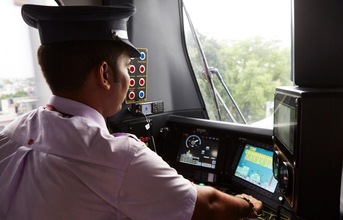
Alstom has been awarded contracts to equip Mumbai Metro lines 2A, 2B and 7, and Pune Metro lines 1 and 2, with Urbalis 400, Alstom's latest generation of Communications Based Train Control (CBTC) technology. The combined value of the two contracts comes to over €90 million.
The contract for Mumbai Metro, awarded by Delhi Metro Rail Corporation Ltd (DMRC), is to provide the CBTC signalling system as well as a state-of-the-art telecommunication system for the three elevated lines. The combined lengths of lines 2A, 2B and 7 make it one of the most extensive signalling projects in the country. The signalling scope includes design, manufacture, supply, installation, testing and commissioning of Urbalis 400 and includes supply and commissioning of on-board equipment for 63 trains. The telecommunications scope includes public address systems, passenger information display systems, fibre optic transmission systems, CCTV, and access control systems.
The contract for Pune Metro, awarded by the Maha Metro Rail Corporation Ltd (MMRCL), will see Alstom provide Urbalis 400 for Corridors 1 and 2, to control 31 trains on the 32-kilometre-long stretch, allowing them to run at higher frequencies and speeds in total safety.
"We are proud to have been selected by our customers for these prestigious projects. Our cutting-edge technologies will help enhance the quality of life of the citizens of both Mumbai and Pune and will contribute to the overall development of the cities. We are also proud to be a key partner, via these projects, in the growth of sustainable transportation in the region," said Alain Spohr, Managing Director for India & South Asia.
Both Mumbai and Pune, located in the state of Maharashtra, are among the fastest growing cities in India and are both grappling with issues related to vehicular traffic, air quality and road safety. The prime objective of Mumbai's lines 2 and 7 is to provide mass transit services to those residing in areas not served by the existing suburban rail network. In Pune, CBTC will significantly boost the metro's ability to mitigate air and noise pollution in the city by offering an attractive mass transit alternative.
END



























